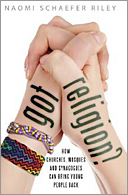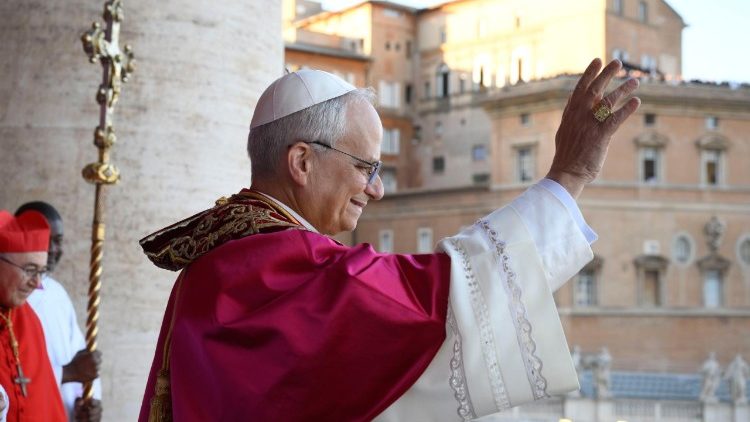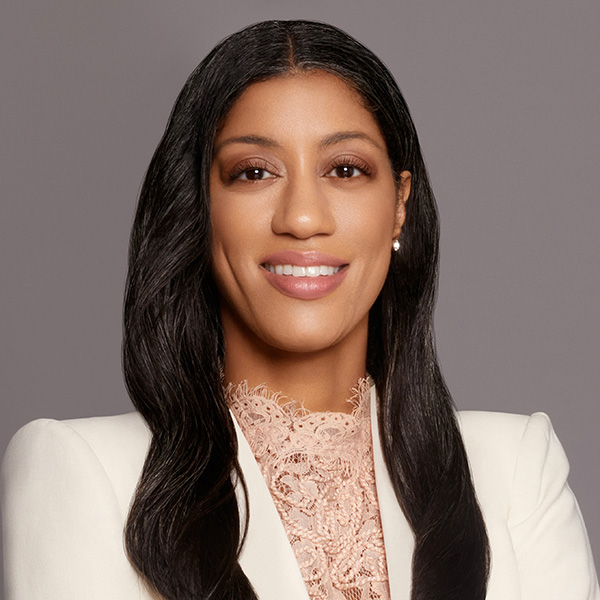Naomi Schaefer Riley read about the plummeting numbers of young adults involved in religious life and decided to find out, not what religious institutions were doing wrong, but rather what they were doing right.
 She investigated the research on the topic and visited religious institutions that have adopted successful strategies for attracting the under-30 crowd.
She investigated the research on the topic and visited religious institutions that have adopted successful strategies for attracting the under-30 crowd.
In her book “Got Religion? How Churches, Mosques and Synagogues Can Bring Young People Back,” Riley examines seven models of young adult outreach in Christian, Muslim and Jewish faith communities and offers a look at how they might be adapted from one context to another.
Riley spoke to Faith & Leadership about her findings, and offered some do’s and don’ts for religious leaders. The following is an edited transcript.
Q: What would you name as the main take-aways of your book for leaders in the institutional church?
 I spent a lot of time talking to different demographers and academic researchers, sociologists and religious leaders about this trend toward the unaffiliated, trying to figure out whether these people will come back to the church eventually.
I spent a lot of time talking to different demographers and academic researchers, sociologists and religious leaders about this trend toward the unaffiliated, trying to figure out whether these people will come back to the church eventually.
I think that there will be some return, but I think the rising age of marriage is unprecedented. The average age of first marriage for women in America is 27. For men, it’s 29, and for college-educated young people, it’s even higher than that. So it really is a long period of time that we are waiting.
There are 10, 12, 15 years between the time that they leave their parents’ homes and the time that they themselves may get married and settle down, and of course fewer people are getting married at all.
I looked at a lot of different efforts that have been made to try to bring this generation in. A lot of money has been spent, as I’m sure you know. Some of it has unfortunately been rather fruitless. There are some slick marketing campaigns out there. There is a great attempt to master the technology in order to get young people back.
One of the things I saw was that technology really was not a huge factor. Young people expected their religious institutions to have some basic information on a website and a little bit of a presence on Facebook and perhaps Twitter, but really, that was not a major factor in getting them in the door, and certainly not in keeping them there.
Q: There’s an assumption that digital presence appeals to young people.
People look at this generation and they think, “It’s different” -- and the easiest conclusion is that it’s different because they grew up with iPhones and it’s different because they’re masters of social media. But I don’t think that’s necessarily the defining feature of their difference.
One of the things that I think people misunderstand about the use of technology is that often the technology that young adults use is really in the service of getting face-to-face contact. A lot of it is, “Here I am -- where are you?”
Young people are longing in many ways for the kind of spontaneity and community that their grandparents’ generation had. The idea that you can walk through a neighborhood and run into people that you know at the coffee shop or the bar or the church is really something that appeals to them greatly.
So you really have to consider that the technology, as I said, is being used in the service of this face-to-face contact. It’s not an end in and of itself.
Q: If technology isn’t the solution, what is?
One of the things is this community-based approach, and it is a little bit of a rejection of the megachurch model.
I went to Redeemer Presbyterian Church in New Orleans, and the whole basis of the church is “We are committed to this neighborhood.” People sometimes come try to join the church from other neighborhoods, and the pastor will actually say, “Are you sure there’s not a church closer to you that you’d prefer?” Which is, I think, a little bit strange. Many people might be put off. He’s very polite about it, but I think that emphasis is important.
The second enormous factor here is that we treat this generation like children. I mean, they’re 25-year-olds, 26-year-olds. Maybe they haven’t gotten married. Maybe they’re still living in their parents’ basement, and maybe they haven’t completed their education or they’re still looking for a job. But they’re perfectly capable of taking on a lot of the important responsibilities in a religious institution.
One pastor I talked to at a black church in New Jersey [First Baptist Church of Lincoln Gardens] told me the story about how he fired his wife. His wife had been in charge of the women’s ministry at the church for many years. And he said, “You know, I think it would be useful to have the young adults who come in here take on these leadership roles and feel as if they’re needed every week.”
Because you could get the sense, if you’re a 25-year-old walking through the door of many churches, that you could come or go and no one would really miss you. Not only are these capable young people, but often they may have more time and flexibility than the 30- or 40-somethings who are juggling careers and children.
Q: You have said that it’s important for people to be producers of religion as opposed to consumers of it. Is that a difference with this generation?
I can’t say that it started exactly with this generation, but certainly I think it’s reached a kind of apex. If you look at what the college religious experience is right now, in many ways religion on campus is thriving. The students are more religious than the faculty or the administration in most cases -- everything from Hillel to Campus Crusade to the Cardinal Newman Society can be very popular.
Religion on campus is extremely convenient. It’s right there. You don’t have to pay extra. You don’t have to deal with people who are not in your immediate peer group. The messages are all tailored to you as a young person. The celebrations are fun and exciting. The music is great.
One of the problems with all this is that when students graduate, it’s not clear that they’re going to be able to replicate this -- or even that it would be desirable for them to be able to do so.
Multigenerational churches are complicated things. They’re not all about celebration. It’s not all 20-year-olds without a care in the world. The “gourmet liturgy” and the exciting music can often be difficult to find in a traditional church. But this gets to the question of the fact that we’ve trained them to be spiritual consumers in that sense, and traditional churches and multigenerational churches need spiritual producers.
They need people who will come in and say, “I’m not just looking to be entertained; I want to actually give something.” Many of the young people that I interviewed did want to give something back. This is a generation that has been raised on the ethic of service. They’ve been doing volunteer work since high school or earlier.
But whether you can get them to get over that hump of “This may seem like a boring institution to you, but we would like you to make it actually more lively if you could” -- I think it’s a hard mountain to climb.
Q: What organizations did you find that were successful in bridging that gap from college vibe to day-to-day, day-in, day-out, multigenerational, on-the-ground religious institutions?
One thing that was really interesting was this young adult Muslim group that I visited in California. It’s called Muslims Establishing Communities in America (MECA), and what they’re trying to do is create a pipeline of young leadership. So they have really fun activities, a lot of social gatherings.
They do all sorts of different kinds of activities for young people that feel like they’re a little bit like they’re in college, but they are very serious, and they’re doing studies of the Quran and also trying to teach these young people how to analyze texts. Many of them have been taught to memorize the texts but not to interpret them fully.
So that was a really interesting way to bridge this gap. It tried to take them from where they were and bring them into these young leadership positions.
Q: Did organizations that were successful with young adults have leadership development, either formally or informally?
One interesting model was [First Baptist Church of Lincoln Gardens], in which the young adults group is called Fusion. The reason that it was called that was because it wasn’t simply a separate entity. Every person in Fusion was training to be part of another ministry in the church.
It wasn’t just, “OK, we’re going to have the young adults group.” They asked, “Which of these ministries would you really like to be getting involved in as a leader, and we’ll train you to do that?”
Another example is the Alliance for Catholic Education, which is kind of the Catholic version of Teach For America. They send out young people to impoverished communities to teach in Catholic schools there, but while they’re doing that, they live in community.
It’s almost like a lay order, and they’re training these young people not only to teach in these schools but to be a kind of spiritual representative in a community. In those first couple of years out of college, one of the things that these kids learn is to really own the faith.
Q: Leaders in the church may think, “Shouldn’t the institutions be forming the young people, as opposed to the institutions trying to conform to what they think these young adults want?”
Ideally, I think, yes. But one of the problems is that we have let this post-18-year-old, post-college generation kind of flounder. If this were a continuous process, it would be a little bit different, but for many of the people who are saying they’re unaffiliated or “nones” now, it’s been several years since they’ve been in a religious institution at all.
Many parents see their responsibility when it comes to religious life rather early, and that’s not really the time to do it. I was talking to the rabbi at my own synagogue about this. You have all these Jewish parents who say, “I’ll send my kid to Hebrew school and they’ll get a bar mitzvah, and then everything will be fine.”
Those kids are not getting married for another perhaps 20 years, and so it’s a little odd to think they’ll be set for life as a result of what happens to them when they’re 13. Those childhood religious experiences, as much as they’re quite symbolic, are not, I think, what will carry people through in terms of how they practice religion as an adult.
I do not think that the religious institutions should be changing themselves theologically. The suggestions that I make in my book are really structural changes and ideas about our attitudes toward this generation.
Q: You also make the point that during this extended period before marriage, young people become “formed by others.” What kind of formation can go on during this period of life?
I really do think that ultimately families have to take some responsibility here. It can’t all be on the shoulders of religious leaders. I would add one other thing. Not to harp on this point, but it’s not true -- simply true -- that parents when their kids are teenagers decide that they are not going to force them to go to church anymore. It’s also that the parents drop off, too.
I’ve interviewed a bunch of kids who, when they go off to college, find that the parents have stopped attending religious services. It’s as if the parents have gotten across the message that religion is for kids, and now that our kids are out of the house, we’re done.
It’s about building that kind of community to get them in the habit of coming. I know the logic sounds circular, but the likelihood that you will exhibit some religious practice next week has a lot to do with whether you did it this week.
We, certainly as Jews, place a lot of emphasis on the High Holidays, but what about what happens in between? It’s not just about having social events. It’s also about religious ritual, which I think provides the solidity and the regularity that is lacking from these young adult lives in many cases.
Q: Is there a tension between more conservative theology and perhaps more progressive attitudes of the younger generation?
This is a hard one, and obviously I surveyed a number of different religious groups, and I’m not telling anyone to remake their theology. It’s certainly true that this generation is much more tolerant of homosexuality, for instance, and supportive of gay marriage.
When I talked to the Muslim young adult group, that was one of the barriers for them to going to mosque. Not necessarily the fact that they wanted the mosque to change Muslim theology on this issue, but they didn’t like the kind of hatred that they felt was coming from the pulpit when it came to these kinds of ideas. It didn’t jibe with their sense of what it meant to be tolerant.
In terms of other theological issues, I think there is a concern among a lot of young people about hypocrisy. They worry about their own behavior and that they don’t belong in church unless they have behaved perfectly.
So I think to the extent that church leaders are comfortable with talking about this, it has to be a message that, “We don’t expect you to have everything down before you walk in the door.”
But that is something that is very intimidating for young people. They don’t feel like they should be there unless they’re behaving completely in concert with everything that the church believes.
Q: We did a story about Charlotte/One recently, so I was interested to see that you profile that organization in your book. Could you talk a little bit about the take-aways from that organization?
Charlotte/One is a group of churches, mainline and evangelical, in the greater Charlotte area. The leaders of these churches had gotten together a few years ago, and they were deeply frustrated with their experience of trying to get young adults in the door. They had spent oodles of money on this, on great programs and exciting music, and after a few weeks, inevitably the attendance dropped off again, back to where it was before.
So these leaders got together and they said, “Look, what if we pooled our money and had one event during the week each week in downtown Charlotte so people who are coming out of work can just go directly over?”
The idea was, “We’ll grab them right when they’re getting out of work rather than trying to worry about where they are on Sundays right now.” They would get several hundred people to these events, and they’d have these tables outside the church where it’s being held, and the tables would show on a map where you are in the Charlotte area and what churches are near you.
Charlotte/One set out very early on to not replace church. They said, “We’re not going to have services Sundays. We’re not going to perform baptisms or marriages. We want people to use this as a vehicle for getting back to church on the weekends.” They have an almost 100 percent turnover rate every three years. So it’s not a long-term institution in that sense, and I think it is -- it’s serving as another kind of bridge between college life and the multigenerational religious institution, and it seems to be quite successful.
Read more on this topic: Dos and Don'ts of attracting young people to church
Naomi Schaefer Riley researched congregations and organizations that have been successful in engaging the "nones" and distilled some lessons for faith leaders.
Do …
Treat young adults as young adults. Give them responsibility.
Go local. Focus on a neighborhood and getting people who are nearby to get involved.
Include singles. With the rising age of marriage, we can’t have all of our messages in church just for people who are married or who are about to get married.
Be American. This came out of my interviews with Muslim young adults. Many religious institutions in the U.S. have an old-world feel culturally.
Get new people to come at the same time. It’s a little less intimidating than coming to a new place alone.
Don’t …
Go overboard with technology. I’m not sure that the payoff is really there for the money.
Invest in slick marketing campaigns. These young people are very savvy.
Segregate this generation. Eventually, we have to come to terms with the fact that we want them integrated into a multigenerational institution.
Underestimate them. Just because these young people are living in their parents’ basements, it doesn’t mean that they’re children.











